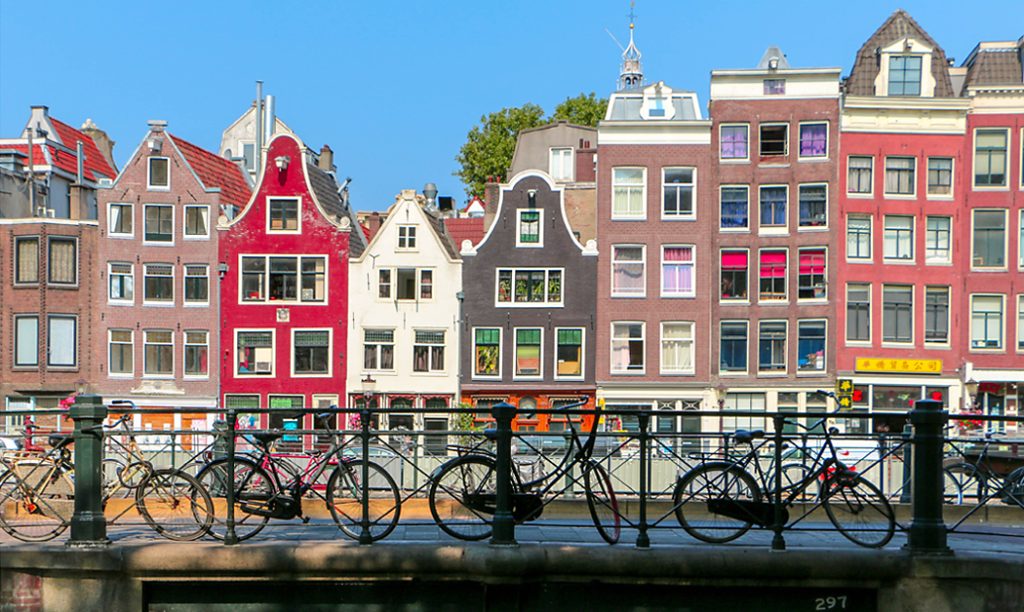
In 2021, while cities around the world were making efforts to recuperate following the shock of Covid-19, one city made an unconventional effort for a more green recovery. Amsterdam is now the first city in the world1 to have formally adopted a “doughnut” economic model, whereby an economy operates independently of financial growth to support social and environmental well-being. Amsterdam is implementing new goals and policies, including a commitment to reduce overall consumption by 30 percent and food waste by 50 percent as of 2030.
Deputy Mayor Marieke van Doorninck explained to PBS NewsHour, “[T]his is a time where people start thinking about what is really important in life. Maybe money making isn’t the most important. It’s about having enough. But not having everything.”
Doughnut Economics and Degrowth
The concept of a doughnut economy (which we’ll cover in detail next month) was first proposed in 2012 by the renegade economist Kate Raworth. She and many others argue that because GDP growth often entails large energy and natural resource usage, it cannot continue unchecked without destroying the environment. The doughnut economy creates a sweet spot in which all enjoy sufficient social benefits while also living in a healthy environment.
Raworth’s ideas have gained particular traction in the “degrowth” movement, which argues that developed, growth-addicted economies often produce and consume wastefully because the system is overly dependent on growing GDP. It is well documented, for example, that if everyone in the world were to match American-level consumption, we would need four additional earths.
Degrowth would not, as some critics say, take us back to the stone ages. One 20202 study found that with technologies currently available to us, reducing excess consumption could provide the global population of 2050 with quality living standards and reduce global energy usage to 1960s levels. According to the authors, cuts in energy consumption of about 95 percent seem possible in high-income countries while still providing quality living standards to all.
Can Green Growth Work?
While doughnut economics and degrowth paradigms have become increasingly popular in recent years, they are still relatively fringe ideas. Instead, many have put their hopes into “decoupling” efforts, which in theory would make GDP growth less reliant on energy and resource usage. People in the decoupling camp generally believe that innovation will allow for increasingly efficient resource use, and that growth goals and sustainability goals are not necessarily antithetical. But has decoupling worked?
A 2020 review3 synthesized the results of 835 peer-reviewed articles on the subject. The review determined that complete decoupling is rarely found, only occurring in times of low GDP growth. At the international level, studies did find evidence for “relative” decoupling: that is, global GDP grew at a faster rate than CO2 emissions from 1960–2014. Since then, however, their growth rates have been roughly the same.
Many studies found decoupling was not strong at the national level either. While some studies did find evidence for national decoupling, a portion of this can be attributed to countries outsourcing their energy-intensive activities. The reviewers noted that “the large majority of this literature does not question the GDP growth paradigm, even if the empirical evidence suggests that it contradicts officially committed climate policy goals.”
We Need To Talk
Overall, the historical evidence against decoupling does not mean that it couldn’t be effective in the future. However, it’s still highly concerning that decoupling is the only major narrative at this point, even when evidence says it hasn’t worked. This lack of diverse opinion makes it harder for effective policy and research to be implemented—and it prevents getting to the core of our social and environmental issues. By exploring alternative paradigms such as degrowth and new models like doughnut economics, we can begin to envision productive directions for our economies and societies.
- Thompson, M., & Martelli, J. (2021), Amsterdam’s “Doughnut economy” puts climate ahead of GDP, PBS
- Oswald, Y., et al. (2020), Providing decent living with minimum energy: A global scenario
- Haberl, H., et al. (2020), A systematic review of the evidence on decoupling of GDP, resource use and GHG emissions
